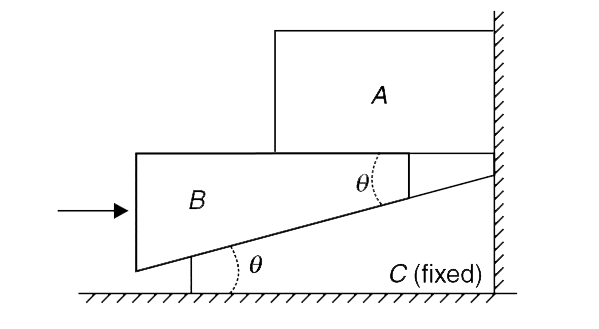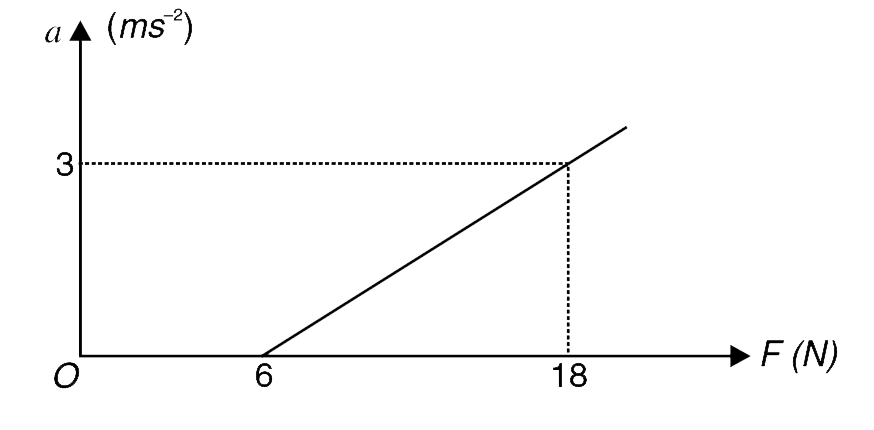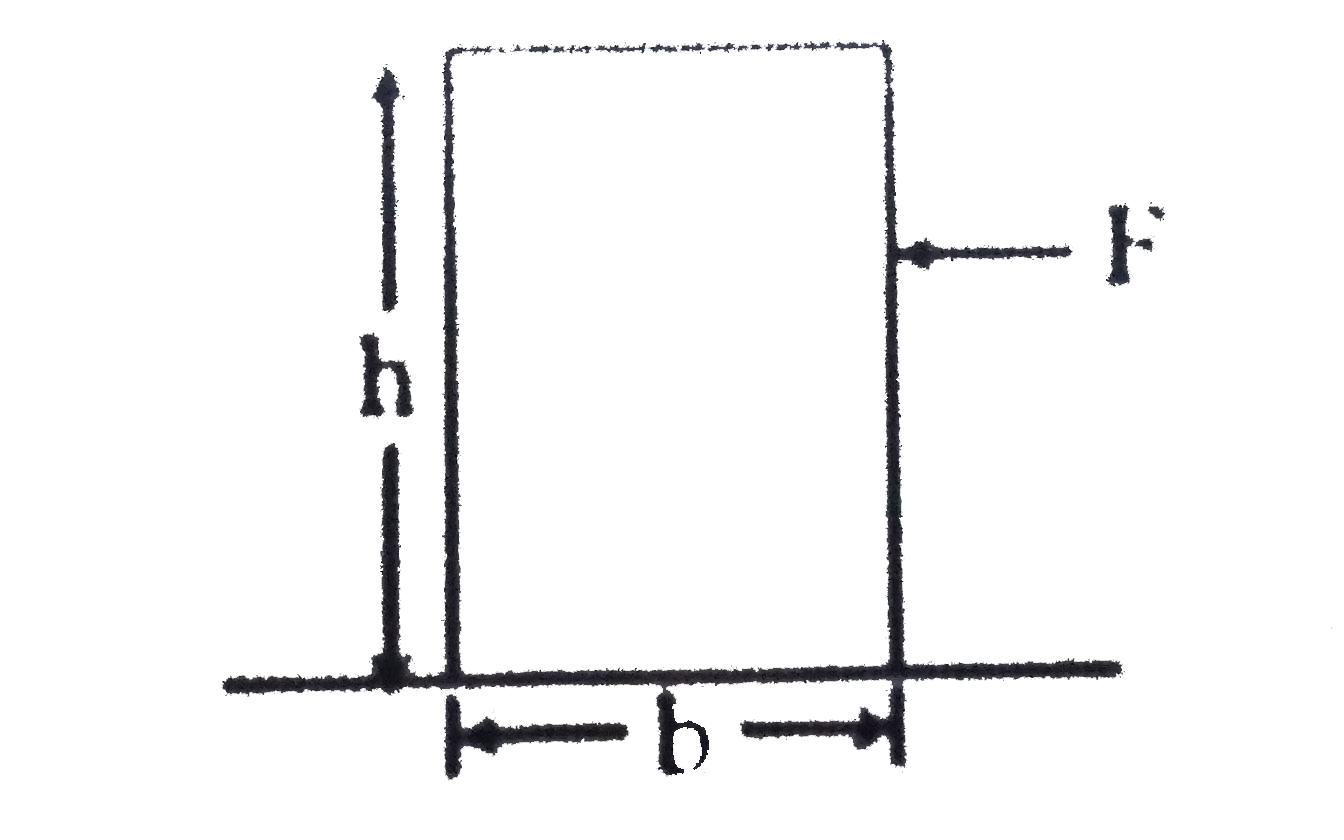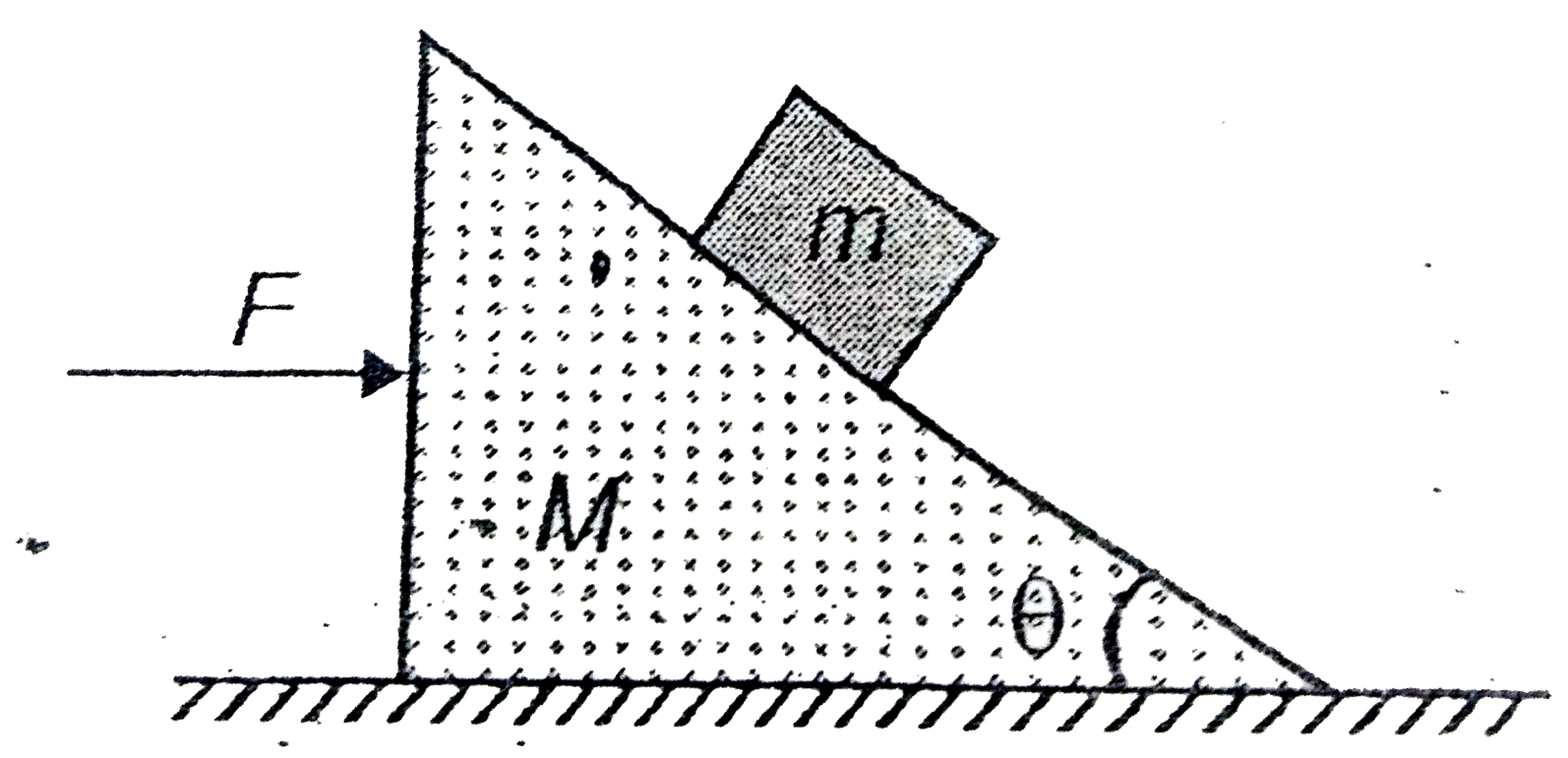In order to lift a heavy block A, an engineer has designed a wedge system as shown. Wedge C is fixed. A horizontal force F is applied to B to lift block A. Wedge B itself has negligible mass and mass of A is M. The coefficient of friction at all surfaces is μ. Find the value of applied force F at which the block A just begins to rise.

The correct Answer is:F=Mg1−μ2[μ+μcosθ+sinθcosθ−μsinθ]
Step by step video, text & image solution for In order to lift a heavy block A, an engineer has designed a wedge system as shown. Wedge C is fixed. A horizontal force F is applied to B to lift block A. Wedge B itself has negligible mass and mass of A is M. The coefficient of friction at all surfaces is mu. Find the value of applied force F at which the block A just begins to rise. by Physics experts to help you in doubts & scoring excellent marks in Class 11 exams.
Updated on:21/07/2023Similar Questions
A block rests on a horizontal surface. A horizontal force F is applied to the block. The acceleration (a) produced in the block as a function of applied force (F) has been plotted in a graph (see figure). Find the mass of the block.

View SolutionTwo blocks of Masses M and 2M are connected by a spring of stiffness k .The coefficient of friction between the blocks and the surface is mu Find the minimum constant force F to be applied to 2m in order to slide the mass M .
View Solution
Knowledge Check
A homogenous block of mass m, width b and height h is resting on a rough horizontal surface A horizontal force F is applied to it , which makes it to move with a constant velocity . The coefficient of friction between block and surface is μ Find the greatest height at which force F may be applied to slide the block with out tipping over
 Ab2μB2bμCbμD2√2bμ
Ab2μB2bμCbμD2√2bμA block of mass m is lying on horizontal surface of coefficient of friction μ. A force is applied to the block at an angle θ with the horizontal. The block will move with a minimum force F if
Aμ=tanθBμ=cosθCμ=sinθDμ=cotθA triangular wedge is placed on smooth horizontal surface. A block is placed on wedge as shown in the figure. Coefficient of friction between block and wedge is μ. Initially system reamins at rest.
 Aμ=tanθBμ=cosθCμ=1tanθDμ=sinθ
Aμ=tanθBμ=cosθCμ=1tanθDμ=sinθ
A block of mass m is placed on a wedge of mass M and a force F is acting on its as shown . If all surfaces are smooth , find the force F such that, there is no relative motion between m and M.

View SolutionA block of mass m is placed on a wedge of mass M and a force F is acting on it as shown . If all surface are smooth , find the force F such that , there is no relative motion between m and M .

View SolutionA wedge of mass M makes an angle θ with the horizontal. The wedge is placed on horizontal frictionless surface. A small block of mass m is placed on the inclined surface of wedge. What horizontal force F must be applied to the wedge so that the force of friction between the block and wedge is zero ?
View Solution
A block B is placed over a cart which in turn lies over a smooth horizontal floor. Block A and Block C are connected to block B with light inextensible strings passing over light frictionless pulleys fixed to the cart as shown. Initially the blocks and the cart are at rest. All the three blocks have mass m and the cart has mass M(M=3m). Now a constant horizontal force of magnitude F is applied to block A towards right.
Q. Let the coefficient of friction between block B and cart is μ(μ>0) and friction is absent everywhere else. Then the maximum value of force F applied to block A such that there is no relative acceleration between block B and cart is
View SolutionA block of mass m is pulled along a horizontal surface by applying a force at an angle θ with the horizontal. If the block travels with a uniform velocity and has a displacement d and the coefficient of friction is μ, then the work done by the applied force is
View Solution

